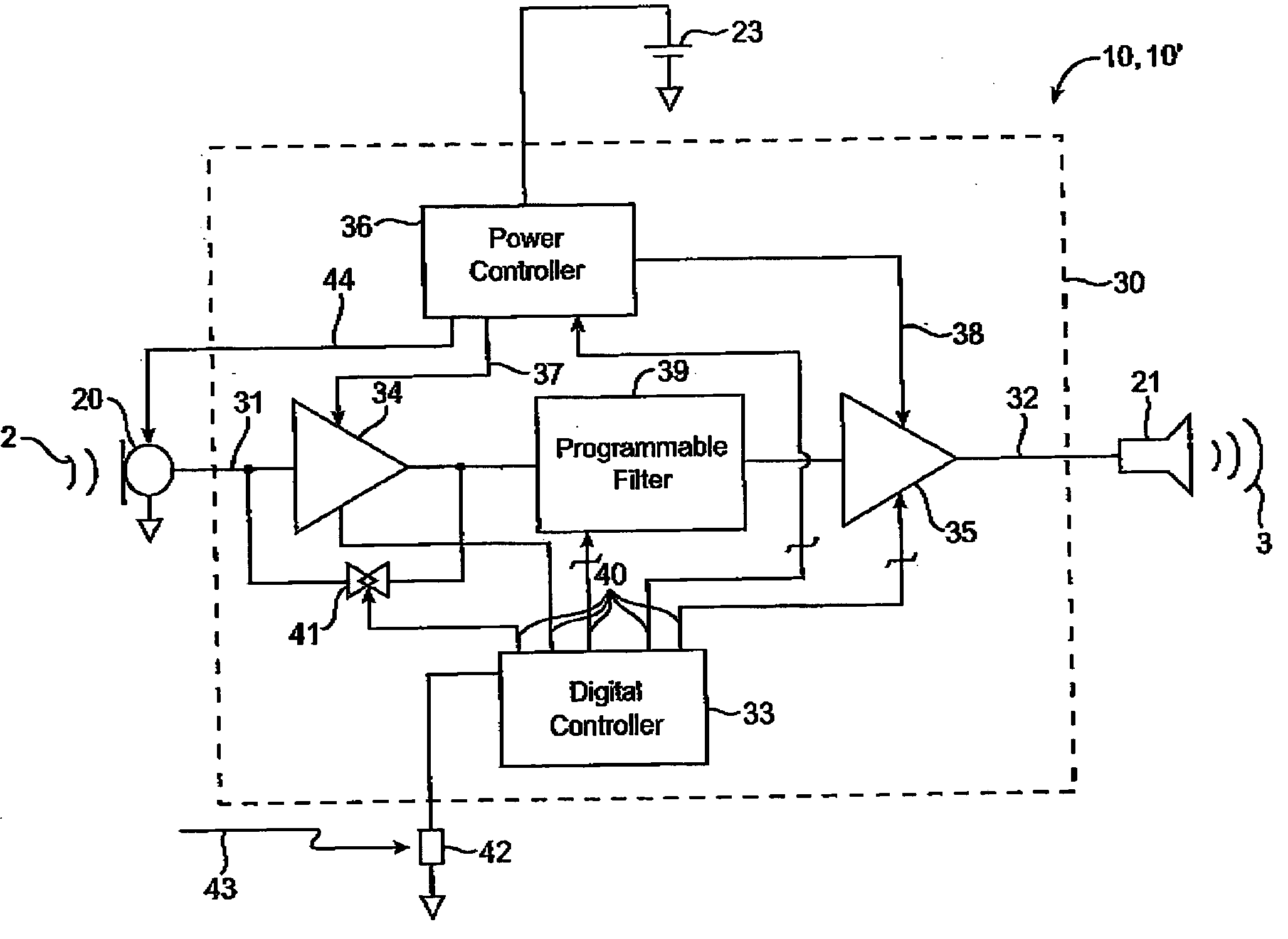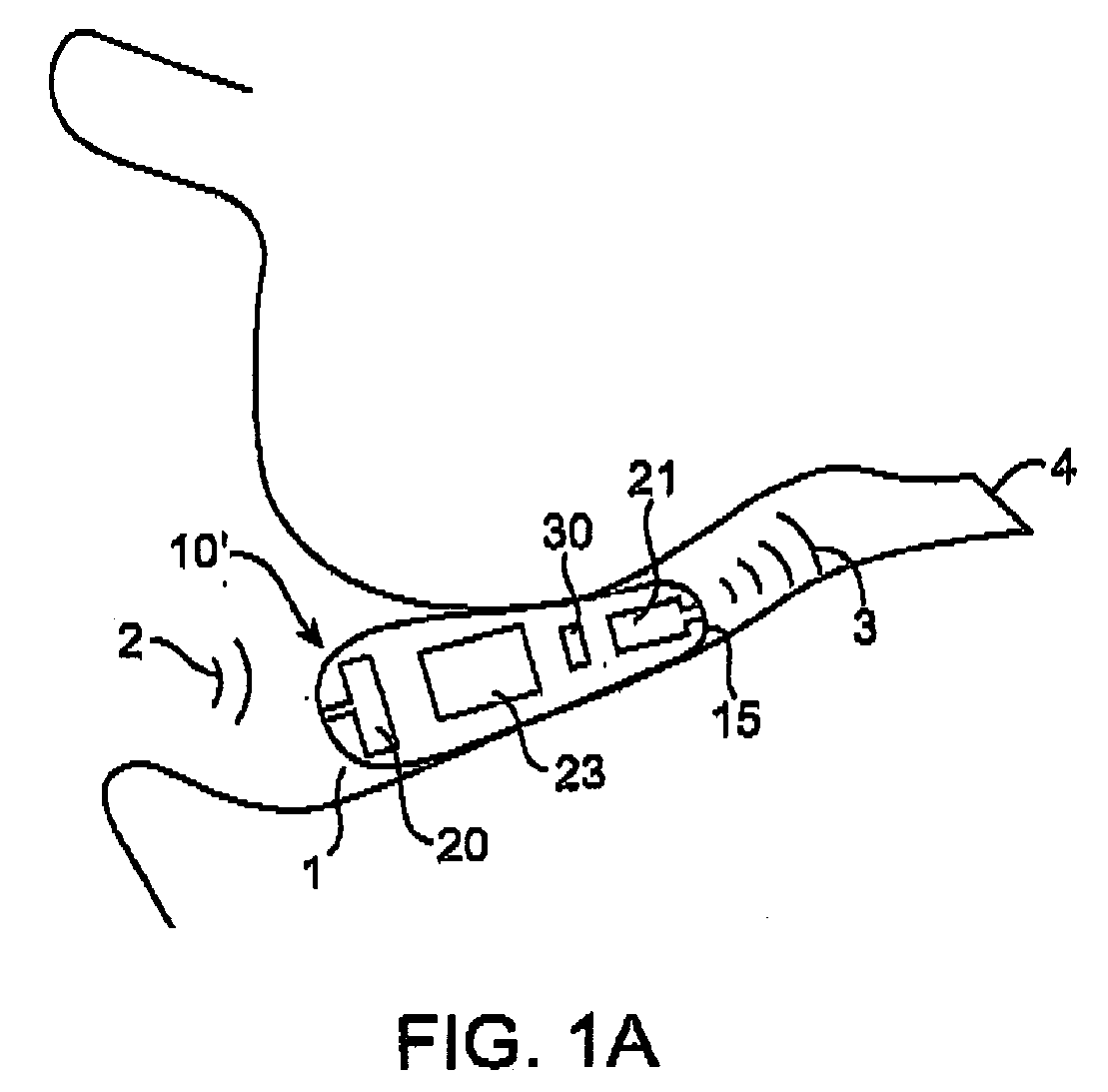Canal hearing device with transparent mode
a hearing device and transparent technology, applied in the field of miniature hearing aids, can solve the problems of affecting the quality of incoming sound, and affecting the quality of incoming sound, and is clearly not a desirable scenario for the hearing impaired
- Summary
- Abstract
- Description
- Claims
- Application Information
AI Technical Summary
Benefits of technology
Problems solved by technology
Method used
Image
Examples
Embodiment Construction
[0021] Various embodiments of the invention provide hearing aid devices, apparatus and methods which utilize an acoustically transparent mode of operation. This mode of operation is achieved through the use of an in-situ acoustic transfer function that compensates for the insertion loss caused by the presence of a hearing device in the ear canal. The transparent mode simulates the user's experience of unaided hearing, thus causing the user to perceive the “absence” of a hearing device while a device is worn in the ear canal. This mode is particularly useful during wearer inactivity, such as during sleeping. Thus the mode is referred to below sometimes as sleep mode.
[0022] The transparent mode can significantly reduce current drain from the hearing aid battery and thus serves to extend the life of the battery and the hearing device. Current reduction is achieved by shutting off one or more circuit elements and / or by reducing bias currents to other elements. Various embodiments of th...
PUM
 Login to View More
Login to View More Abstract
Description
Claims
Application Information
 Login to View More
Login to View More - R&D
- Intellectual Property
- Life Sciences
- Materials
- Tech Scout
- Unparalleled Data Quality
- Higher Quality Content
- 60% Fewer Hallucinations
Browse by: Latest US Patents, China's latest patents, Technical Efficacy Thesaurus, Application Domain, Technology Topic, Popular Technical Reports.
© 2025 PatSnap. All rights reserved.Legal|Privacy policy|Modern Slavery Act Transparency Statement|Sitemap|About US| Contact US: help@patsnap.com



